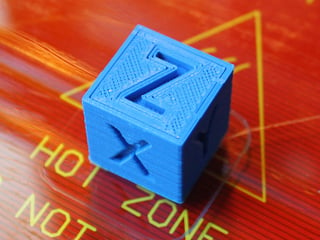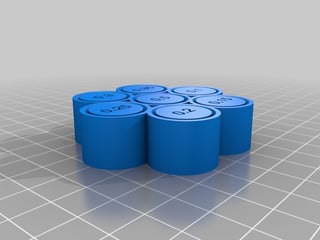This is a fairly open ended subject, but the different calibration/test models can be broken down into a few different groups. Although there are a few common 'standards', as soon as you get to looking at a specific parameter, you will need to look for something that is a good match for your problem (not everything on thingiverse is really 'useful), and work out how to use it for your adjustments. Ultimately, the specific model you're working on is the best test - and it may also be that this model is not optimal in some way.
Here is a print from my own test model which shows the slicer not handling my model very well, partly because the model doesn't respect the filament dimensions. It also shows how a variety of print details can be captured in a small (20 min) print.

Basic Calibration
This is a step that you might be tempted to skip on a non-diy printer, since it mainly focuses on the construction. The basic 20mm calibration cube (just a square) can be used to test that your printer is dimensionally accurate, and is also one way to check your extruder steps/mm (extrusion is variable, x/y steps generally only change when the belt skips).
You can also use bigger shapes if you suspect that there are drive problems, and bed leveling might come into this group too, where you could use a one or two layer print.
Test Parts
These are small parts that might once have been considered hard to print, but now seem to be a standard reference for a 'good' print. Most people who have been printing for a while have a collection of benchie and marvin prints. You might use these to quickly test a new filament, although the benchie is borderline large.


Detail calibration
Depending what you want to focus on, there will be different things you can use. Temperature calibration towers, overhang and bridging tests, ripple tests (for acceleration), fan tests, etc. This is an area where finding a 'good' test part can be hard. You would want to make sure that the previous two classes of test show good all round performance (or have identified a specific problem) first, before trying this sort of test.
For the print-in-place example, you might need to check extrusion/ooze/coasting, as well as checking linearity and orthogonality (it's no use if a circular part turns out to be more like a diamond with rounded corners). You also need to make sure your first layer is good, without a rim or warping.
Torture tests
I put this in a group on it's own because it may not be as useful for tuning a printer as some of the others. This is a little bit more about showing off how good your printer is tuned - and is the origin of the benchie and marvin type models, just with the difficulty turned up a notch or two. Some print-in-place models might fit into this category.





